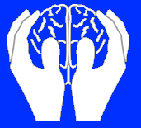Публикуваме тази статия с разрешението на Mind Alive Inc.
As published in the Journal of Neurotherapy, Volume 13, Number 3. 2009, pages 166 - 175.
Audio-Visual Entrainment (AVE) as a Treatment Modality for Seasonal Affective Disorder - Kathy Berg & Dave Siever
Problem
Each year, 6% of northern populations are affected with Seasonal Affective Disorder (SAD). Women through the ages of 20 to 40 are most vulnerable (Rosenthal, 1993). The common symptoms are slow brainwave activity, depression, anxiety, extreme fatigue, hypersomnia, carbohydrate cravings, and weight gain. "Light box" therapy has reduced symptoms of SAD in 60% to 80% of SAD patients (Lam, 1999). The purpose of this study was to assess the effectiveness of Audio-Visual Entrainment (AVE) using flashing lights and pulsing tones to lower SAD symptoms through beta brainwave enhancement.
Method
The Digital Audio-Visual Integration Device (DAVID) by Comptronic Devices Limited was used in a 4-week study to reduce the symptoms of SAD through the application of AVE. The participants were screened according to the DSM-lV SAD requirements. The study accepted participants from November 1998 to March 1999. The participants were residents of Edmonton, Alberta, Canada, living at approximately 53.5 B north latitude.
Procedure
Seventy-four participants were randomly selected in the study. The study involved 52 females and 22 males, the group averaging 38.5 years of age. The Beck Depression Inventory (BDI) and the Anxiety Sensitivity Index (ASI) were used for the pre-test, post-test (placebo), and the post-post-test (treatment) results. A daily diary was maintained to record total sleep time, sociability at work and with the family, eating, appetite, carbohydrate intake, cravings, and energy.
The participants were divided into two groups: a Control Group that did not receive the DAVID AVE unit and the Treatment Group that received "placebo" and treatment sessions. The Treatment Group received sub-delta (placebo) frequencies of 1 Hz for 2 weeks followed by beta frequencies (treatment sessions) of 20 Hz for 2 weeks. Fifty-eight treatment participants and 16 control participants finished the study. The paired t-tests were used in the within group measurements, and the analysis of variance (ANOVA) was used in the between group measurements.
Results - Figures 1 and 2
The results indicated the pretest BDI score for both groups was 20.1. A score above 9.0 indicates mild depression. Depression within the Control Group increased by 28% to a score of 26.1 as indicated on the BDI. Reduction in symptoms of depression occurred with 36% of the participants in the placebo (post) group. In the treatment (beta) group, 100% of the participants had reduced depression (BDI=7.3, p<0.001). Of these, 84% became clinically non-depressed. The AVE male population anxiety decreased significantly from 21% to 60% (p<0.001) from post to post-post, respectively while the control male population had a 7% increase in anxiety. The AVE female population showed decreased anxiety, from 15% to 34% (p<0.001) from post to post-post respectively while the control group showed a mild reduction of 6%.
Figure 1

Figure 2

The Daily Diary results (Figure 3) indicated marked improvement in 7 out of the 9 tested symptoms. Sociability with the family and at work improved by 22% and 40% respectively. Positive moods improved by 20%. AVE participants' food intake changed; eating decreased by 18%, appetite decreased by 12%, and carbohydrate intake decreased by 15%. The participants also reported happiness that their energy increased by 18% (Figure 4).
Figure 3

Figure 4

Conclusion
The beta frequencies generated by the DAVID AVE device produced significant results. Although past research indicates sub-delta frequencies are non-effective at generating entrainment, sub-delta frequencies can affect both dissociative mind states and cerebral blood flow. In addition, the "placebo effect" could also explain the sub-delta significance. The "placebo effect" has been shown to reduce anxiety, increase endorphin production, conditioning, and expectancy (Godfroid, 1998). Being that inadequate light elicits depression in SAD sufferers, the "placebo effect" via photic stimulation is possible.
The AVE Group's depression decreased while the Control Group's depression increased. Anxiety, a secondary symptom of SAD, decreased in both male and female AVE groups. Although the female control participants decreased anxiety, the female AVE population was significant using the 1 Hz and 20 Hz stimulation.
The daily diary results showed decreased over-eating, appetite, and carbohydrate intake while energy levels increased. By using AVE, some participants lost considerable weight. Twelve participants (8 females and 4 males) recorded their average weight loss of 3 pounds (1.36 Kg) using the 1 Hz session and an average weight loss of 9.5 pounds (4.3 Kg). These same participants claim their average weight gain during the winter months is 15 pounds. Therefore, one benefit from using AVE is weight loss. One participant claimed, "after using the 20 Hz session for 2 weeks, the taste of sweets in my mouth was repulsive." Follow-up reports indicate participants' SAD symptoms returned within an average of 2 weeks after discontinuing use of the DAVID AVE device. Most Control participants claimed that they gained weight.
References
- Berg, K. & Siever, D. (1999). Outcome of Medical Methods, Audio-Visual Entrainment, and Nutritional Supplementation for Fibromyalgia Syndrome: A Pilot Study. Unpublished manuscript.
- Godfroid, I.O. (1998). [Placebo II. Psychiagenia and the Brain Organization. Annales Medico-Psychologiques].[French], 152(2), 108-114.
- Joyce, M. Siever, D. (1999) Audio-Visual Entrainment Program as a Treatment for Behaviour Disorders In a School Setting. Proceedings of the AAPB Thirtieth Anniversary Annual Meeting, (79-84).
- Lam, R.W. (1999). Information About Seasonal Affective Disorder (SAD). University of British Columbia/VHHSC Mood Disorder Clinic. www.psychiatry.ubc.ca/mood/md_sad.html.
- Rosenthal, N.E. (1993). Winter Blues: What It Is and How To Overcome It. New York: Guildford Press.








